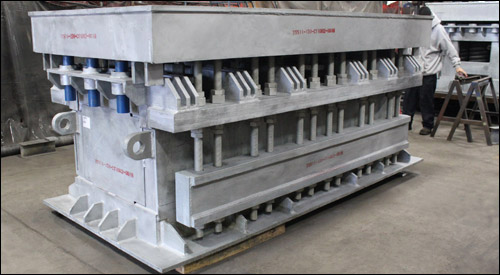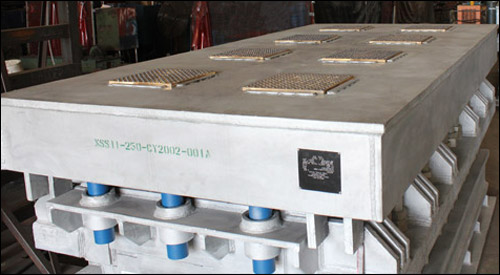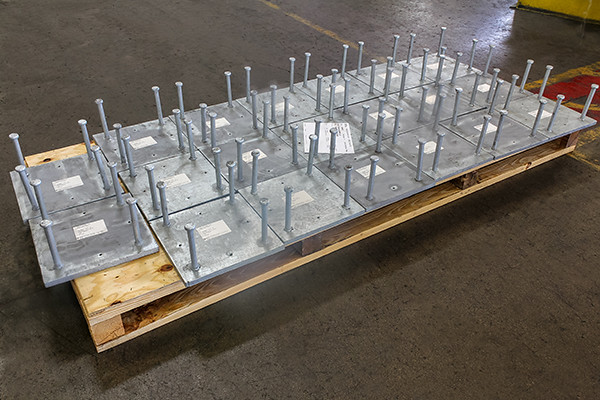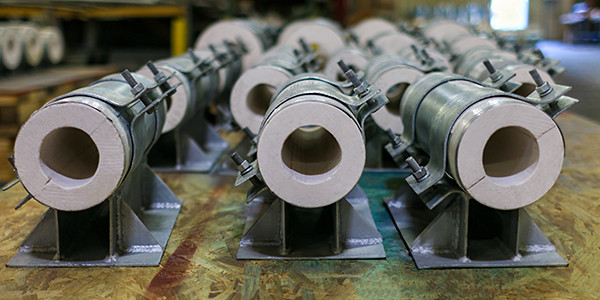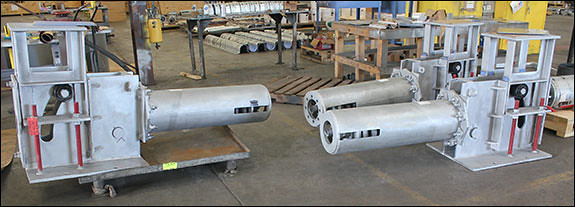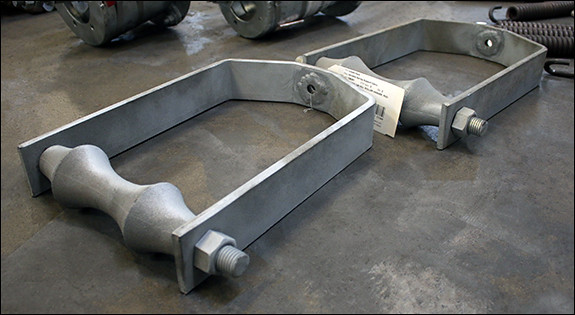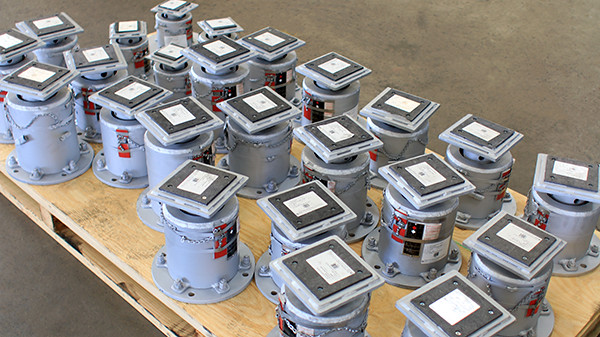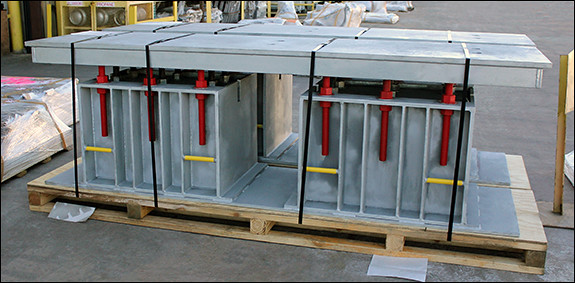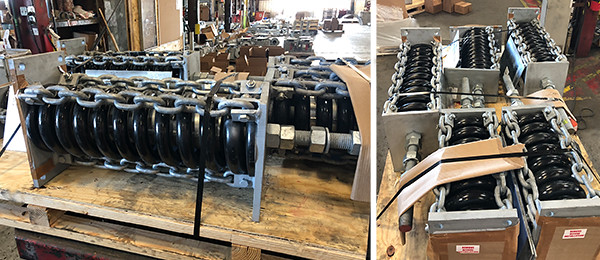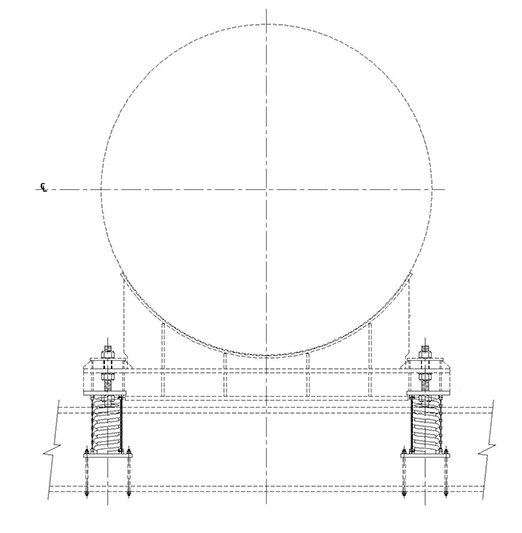A total of eight big ton spring supports, “Mega Tons” were designed and manufactured to support two reactors in a power plant weighing approximately three million pounds each. The mega ton pictured incorporated eighteen individual spring coils to produce a load capacity of approximately 602,000 lb. and a spring rate of 112,500 lb./in. It was designed with eight Bronzphite® slide plates that measured 12″ x 12″. The 12″ x 12″ slide plate selection was based upon the ability to position individual squares across the load flange surface while simultaneously providing the total slide plate surface area required to support the operating loads.
By using individual slide plate squares, the fabrication and assembly time was reduced because a standardized mounting procedure could be incorporated and repeated as necessary for each big-ton load flange subassembly. Overall, the slide plates were incorporated into the design to reduce the horizontal forces which would be imparted onto the big-ton spring’s load flange during lateral deflection (movement) of the reactor.
Bronzphite® slide plates, in particular, were selected because these big-tons will be used in a location which will see continuous “cold-to-hot” operating cycles and as a result, the robust nature of Bronzphite® proved more advantageous than other types of slide plates. The other two designs used nine slide plates, one with fifteen individual coils to produce an operating load of 594,000 lb. and a spring rate of 250,050 lb./in. The other design had an operating load of 285,000 lb. and a spring rate of 106,000 lb./in.
In addition to designing and manufacturing the Mega Ton spring supports, we were tasked with testing them to confirm they would operate in the actual conditions for which they were designed to operate at the requested loads. Therefore, we custom designed and manufactured a test apparatus and incorporated the use of a special load cell to ensure proper operation throughout the entire working range of the coils. The “mega tons” were then set to the cold (installed) load as specified. Testing was developed and done by our in-house manufacturing, quality and engineering teams.
PT&P REF. ORIGINAL POST 03072012
Read More
